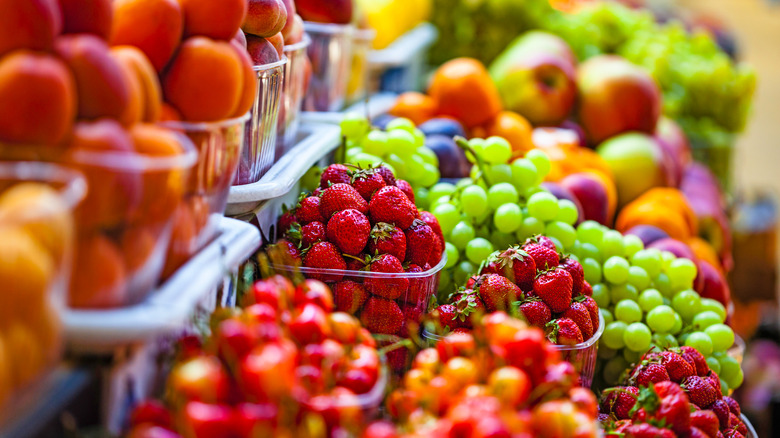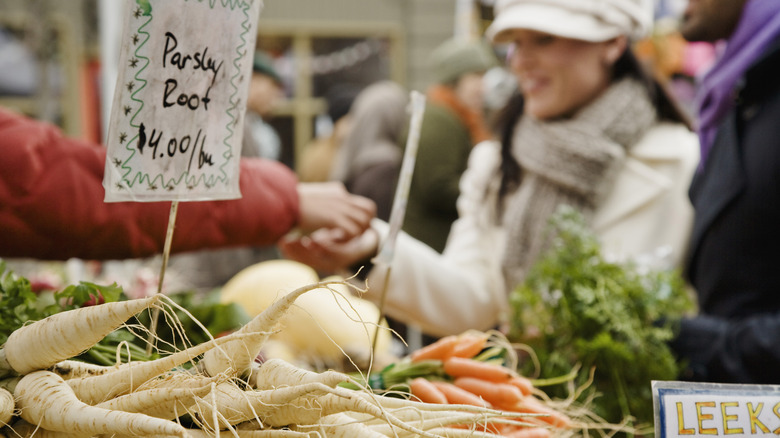The Biggest Faux Pas You Could Be Committing At The Farmers Market
There's nothing quite like a farmer's market brimming with crisp fresh produce, artisanal cheeses, and original local arts and crafts. Gathering edibles from local farms is a seasonal rite of passage and a welcome respite from supermarket uniformity –– which is why farmer's market etiquette is important. Once you realize the little faux pas you're unconsciously committing, the more you can enjoy a carefree afternoon that works for everyone. Get ready to cringe just a little, because it's likely we've all engaged in the biggest gaffe of all: Touching the fruits, herbs, and vegetables.
Though it's arguably the best part of the market experience, handling produce for your own personal freshness test is a major faux pas. As trends lean toward supporting local farmers and food-centric small businesses, farmer's markets often buzz with activity — meaning countless in-person contact points throughout a single day. Imagine how even the most innocuous germs can spread like wildfire if each potential buyer picks up the produce to inspect for blemishes, freshness, color variations, and more.
Constant prodding, squeezing, and handling can also damage fruits and more fragile vegetables, causing a deterioration in quality and, consequently, a loss of revenue by the same farmers you came to support. Yet, the urge to put your hands on those perkily plucked earth offerings can be strong.
Fortunately, there are some hands-free alternatives that ensure you get the best quality and first-person sensory satisfaction.
Hand's off, please
Since vendors typically harvest veggies, fruits, and herbs shortly before arriving at the market, they're fresher and riper for ultimate flavor and enhanced nutritional value. That's why there's usually no need to fully handle and examine each piece before popping it into your reusable take-home bag. Instead, employ your other senses to identify potential issues with freshness, damage, and ripeness.
Your sense of smell is an excellent tool for identifying produce that's past its prime. Check for off-putting odors that signal overly ripe fruits or ones on the verge of rotting, as well as for weak fragrances in aromatic fruits such as mangos, melons, pears, peaches, and strawberries. The same goes for herbs and spices, including basil, ginger, rosemary, coriander, and oregano, whose pungent aromas will fade as they age.
Your eyes are also invaluable when gauging quality and freshness. Look for leaves that are starting to brown and vegetables that appear overly soft or limp. Discoloration, including less vibrant hues, can indicate aging, heat exposure, or even premature harvesting. Fruits in particular are susceptible to bruising if they've been handled improperly. And in addition, herbs such as basil may bear a visible moist texture with limp leaves as they degrade.
If the stand attendant isn't too busy, ask them to pick up the produce for you, spreading leaves or clusters to reveal anything of concern. This person often knows what to look for and how to delicately handle each item.

